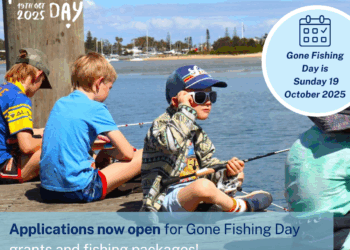LAST year’s controversy over super trawlers and related fish management issues led to the government commissioning a review into the legislation, policy and management applying to Commonwealth fisheries. Known as the Borthwick Review, after the name of its author, it’s been released and appears to have been generally well received, if reactions of Ministers and the Australian Recreational Fishing Foundation (ARFF) can be taken as typical.
The Review report is 180 pages plus, and its 15 major recommendations include:
- the need to address ecosystem impacts, as well as harvest strategies and by-catch and discards policy
- being more transparent on decision making generally and explaining and clarifying how the Australian Fisheries Management Authority (AFMA) works and why it makes the decisions it does
- having a strategic fishery assessment for every fishery management plan
- wider consultation with the community
- clearer Ministerial direction
- amendments to some of the fisheries management and related Acts
- retaining AFMA as an independent (and hopefully more transparent and consultative – my emphasis) authority.
As previously mentioned, the ARFF is supportive but has requested a genuine stakeholder involvement process for the development of review implementation strategies.
Sections of the Review are well worth a detailed read. The case study on the Eastern Tuna and Billfish Fishery provides a concise history of its development and interaction with the gamefishing sector. Some key points:
- this is the third most valuable Commonwealth fishery, with $30.9m in sales in 2010/11
- the harvest of the five key target species (albacore, bigeye tuna, yellowfin tuna, striped marlin and swordfish) increased from 2010 to 11 despite a reduction in fishing effort
- our tuna is exported to Japan, NZ, Thailand, the USA and Vietnam
- commercial markets for by-catch species of major rec interest such as wahoo and mahi mahi have been developed both here and overseas
- Total Allowable Catch quotas (TACs) are developed each year for key species but remain contentious, for example for bigeye tuna which is assessed as “overfished”
- “Resource sharing” between the commercial and rec sectors were covered by a five year voluntary code of conduct (January ’08 to December ’10), which suggests actions such as “commercial fishers shouldn’t set longlines in waters shallower than 400m”
- There is little information available on the recreational take of target species.
Other interesting figures quoted: about 3.4m people fish recreationally each year; there are about 90,000 jobs in the tackle and bait and rec boating industries, which turn over about $170m and $300m respectively each year; ARFF contends rec fishing-related total expenditure is about $10bn annually.
As noted, the government has been generally supportive of Review recommendations. It will be interesting to see what happens after the September election.
John Newbery is Fishing World’s Environment Editor.


















